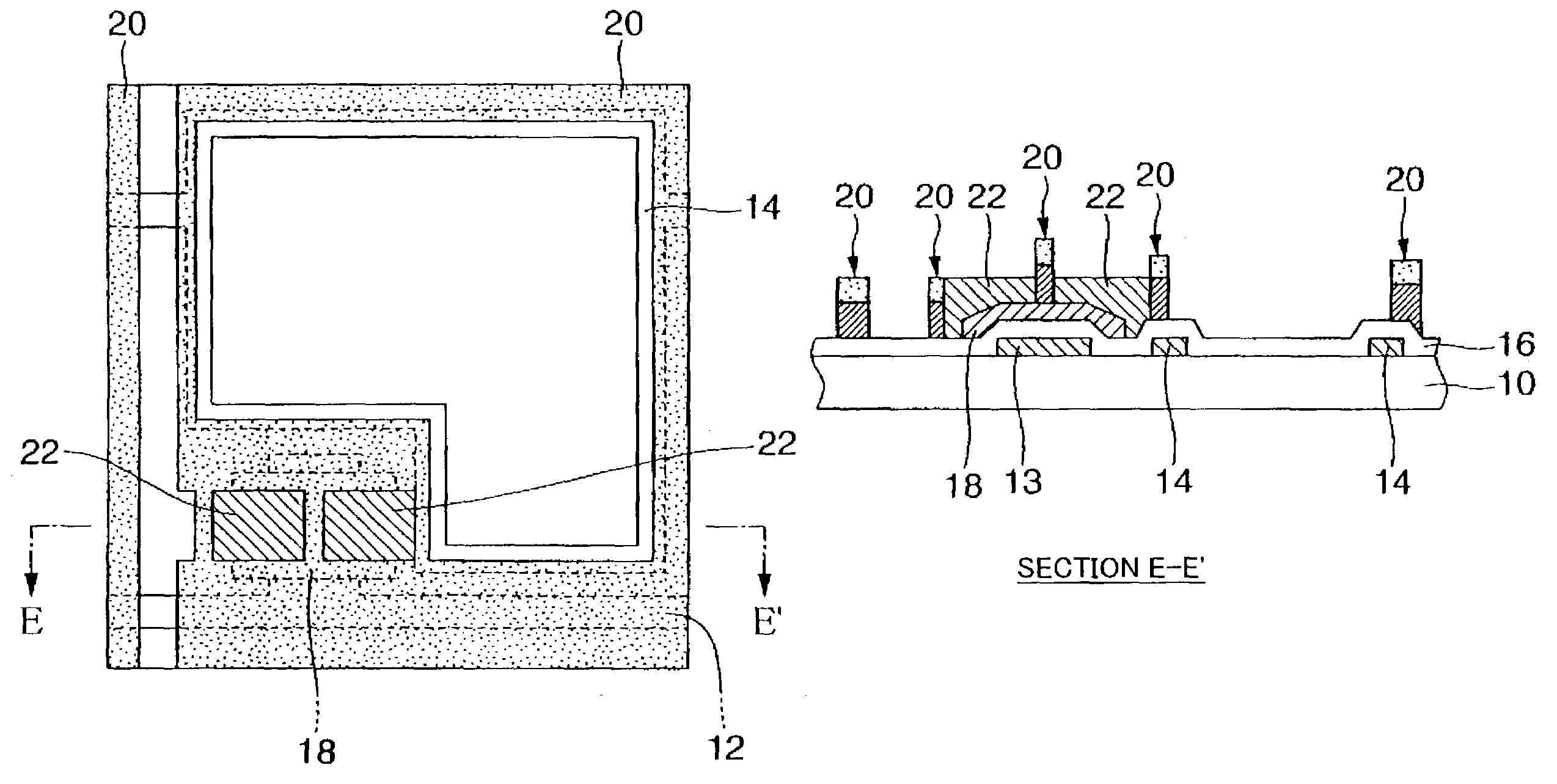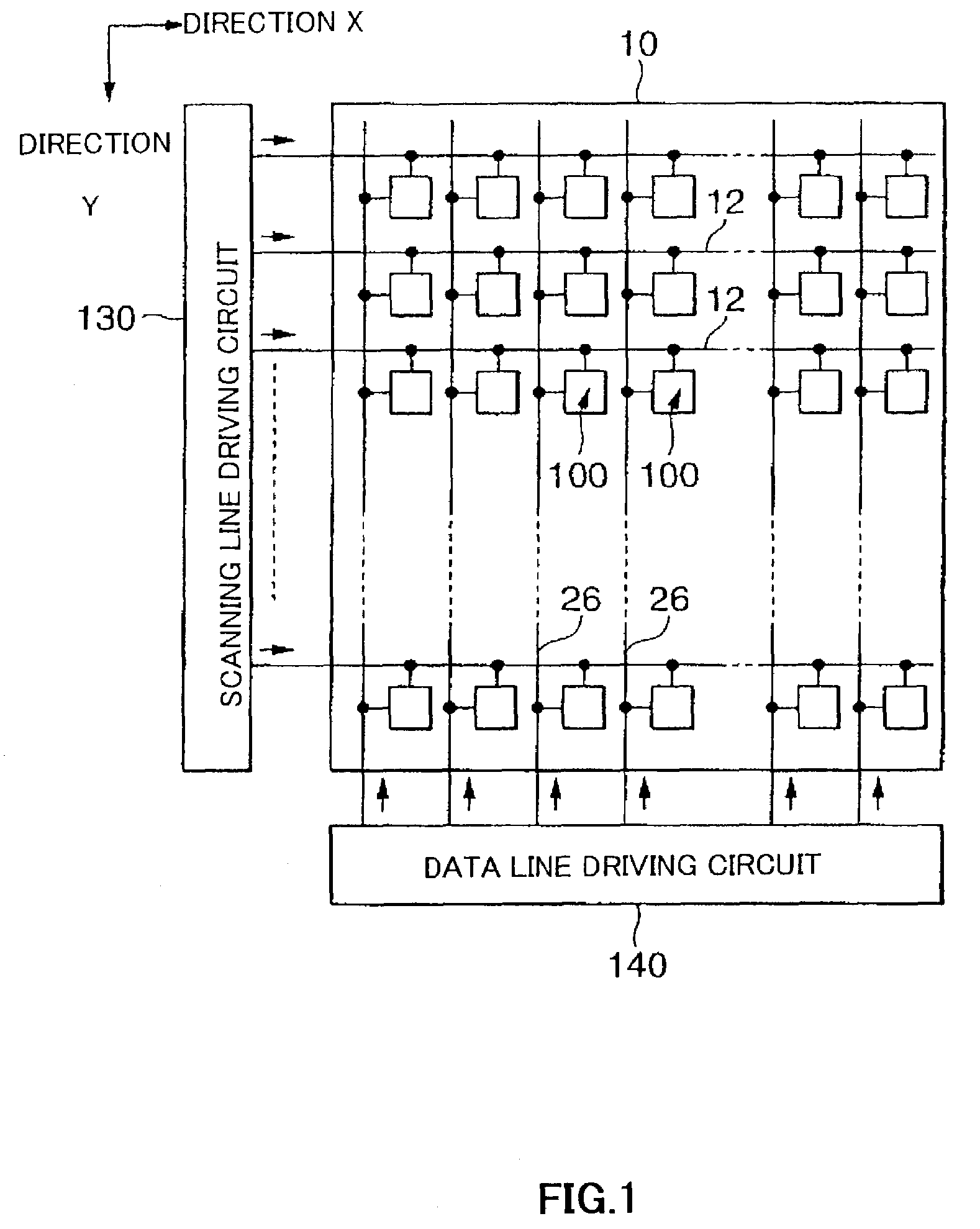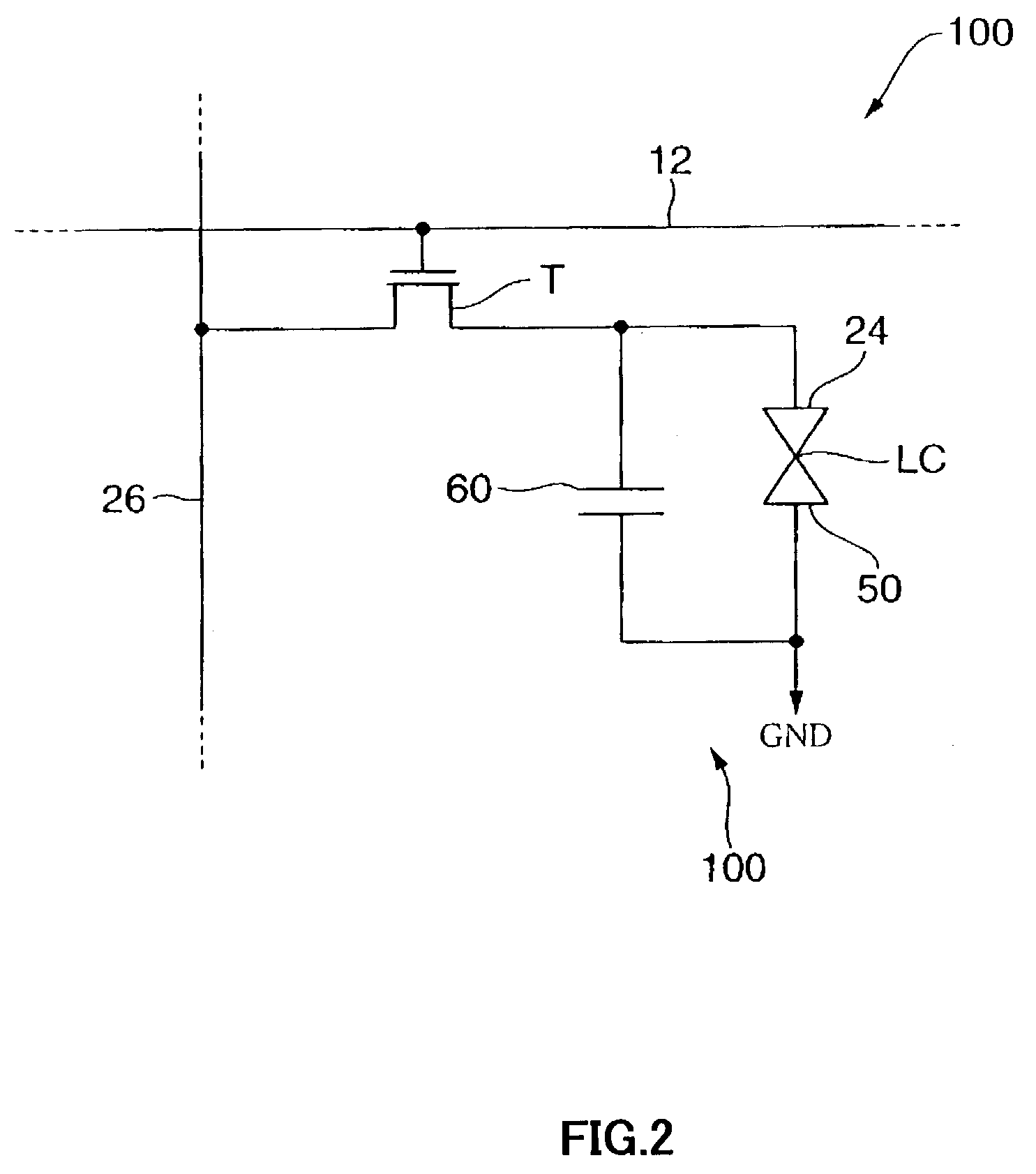Liquid crystal display device having partition walls
a liquid crystal display and partition wall technology, applied in the direction of radio frequency controlled devices, optics, instruments, etc., can solve the problems of difficult to reduce the manufacturing cost in the conventional manufacturing method, poor utilization efficiency of raw materials, and increased processing costs, so as to facilitate the formation and reduce the manufacturing cost of the device
- Summary
- Abstract
- Description
- Claims
- Application Information
AI Technical Summary
Benefits of technology
Problems solved by technology
Method used
Image
Examples
Embodiment Construction
[0051]Now, a liquid crystal display device according to a first embodiment of the present invention and a method of manufacturing thereof will be described with reference to the accompanying drawings.
[0052]In the present invention, the droplet ejection method is a method of forming the desired pattern, including the ejected material, by ejecting droplets to a desired region and may be referred to as the inkjet method. In this case, the droplet to be ejected is not so-called ink used for printing, but a liquid material containing materials constituting the device, such materials include materials serving as, for example, the conductive material or insulating material constituting the device. Further, the droplet ejection is not limited to ejection by atomization, but includes continuous ejection of the liquid material drop by drop.
[0053]FIG. 1 schematically illustrates a configuration of a liquid crystal display device of this embodiment. The liquid crystal display device of this emb...
PUM
| Property | Measurement | Unit |
|---|---|---|
| diameters | aaaaa | aaaaa |
| thickness | aaaaa | aaaaa |
| width | aaaaa | aaaaa |
Abstract
Description
Claims
Application Information
 Login to View More
Login to View More - R&D
- Intellectual Property
- Life Sciences
- Materials
- Tech Scout
- Unparalleled Data Quality
- Higher Quality Content
- 60% Fewer Hallucinations
Browse by: Latest US Patents, China's latest patents, Technical Efficacy Thesaurus, Application Domain, Technology Topic, Popular Technical Reports.
© 2025 PatSnap. All rights reserved.Legal|Privacy policy|Modern Slavery Act Transparency Statement|Sitemap|About US| Contact US: help@patsnap.com



